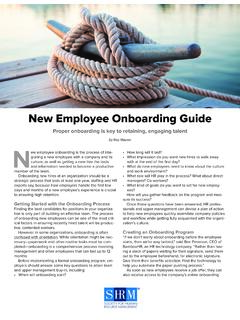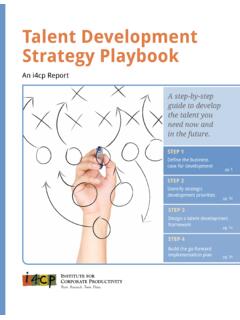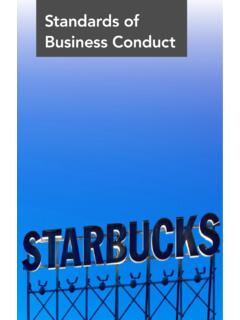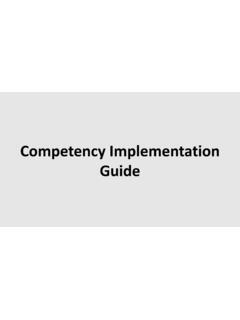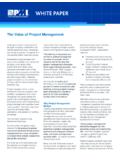Transcription of Who: The A Method for Hiring - Strategy 4 Growth
1 1 Who: The A Method for Hiring Notes by Frumi Rachel Barr, MBA, PhD. Authors: Geoff Smart and Randy Street Publisher: Ballantine Books Copyright year: 2008 eISBN: 978-0-345-51044-0 Authors Bios: Geoff Smart is chairman and founder of ghSMART, an advisory firm that exists to help leaders amplify their positive impact on the world. He is author of the New York Times bestseller Leadocracy and co-author of Power Score. Randy Street is managing partner of ghSMART and co-author of Power Score. He is a leadership advisor to boards and CEOs, and an internationally acclaimed public speaker Authors big thought: Based on more than 1,300 hours of interviews with more than 20 billionaires and 300 CEOs, Who presents Smart and Street s A Method for Hiring .
2 Refined through the largest research study of its kind ever undertaken, the A Method stresses fundamental elements that anyone can implement and it has a 90 percent success rate. Introduction: Who, Not What The most important decisions that businesspeople make are not what decisions, but who decisions. Jim Collins, author of Good to Great What refers to the strategies you choose, the products and services you sell, and the processes you use. Who refers to the people you put in place to make the what decisions. Who is running your sales force? Who is assembling your product? Who is occupying the corner office? Who is where the magic begins, or where the problems start.
3 The authors talked with and listened to many of the world s most talented leaders as they taught their secrets to Hiring success. More than twenty business billionaires, most of them self-made, contributed their insights and experiences to this book, an unprecedented assemblage. Out of a mountain of research, they have identified four parts of the Hiring process where failure typically occurs. Who mistakes happen when managers: 1. Are unclear about what is needed in a job 2 2. Have a weak flow of candidates 3. Do not trust their ability to pick out the right candidate from a group of similar-looking candidates 4. Lose candidates they really want to join their team These Who mistakes are pricey.
4 The average Hiring mistake costs fifteen times an employee s base salary in hard costs and productivity loss. What most managers do not know is that Who problems are preventable. The purpose of this book is to give you a solution to your number-one problem to help you make better Who decisions. Chapter 1: your #1 problem The Method the authors share will do the due diligence for you. It lets you focus on the individual candidates without losing sight of the goals and values of your organization. Before their Method can work to its optimal level, though, chances are you might have to break some bad Hiring habits of your own. The top ten Voodoo Hiring techniques are: 1.
5 The Art Critic: Forgers can pass off fake paintings as real ones to the time-pressed buyer, and people who want a job badly enough can fake an interview if it lasts only a few minutes. Gut instinct is terribly inaccurate when it comes to Hiring someone. 2. The Sponge: A common approach among busy managers is to let everybody interview a candidate to get as much info as possible. 3. The prosecutor: Managers aggressively question candidates, attempting to trip them up with trick questions and logics problems. You may find someone knowledgeable that way but knowledge and the ability to do the job are not the same thing. 4. The Suitor: Suitors are more concerned with impressing candidates than assessing their capabilities.
6 They spend all of their time in an interview talking and virtually no time listening. 5. The Trickster: the interviewers who use gimmicks to test for certain behaviors. 6. The Animal Lover: Asking what type of animal would you be there is no scientific basis or relevance. 7. The Chatterbox: Although enjoyable, this Method does nothing to help you make a good decision. 8. The Psychological and Personality Tester: These types of tests are not recommended as they are not predictive of success on the job. 9. The Aptitude Tester: They can help determine whether the candidate has the right aptitude for the job but they should never be the sole determinant in a Hiring decision.
7 10. The Fortune Teller: Some interviewers like to ask their candidates to look into the future regarding the job at hand by asking hypothetical questions: At the bottom line, all these voodoo Hiring methods share an assumption that it s easy to assess a person. What is an A Player? Think of an A Player as the right superstar, a talented person who can do the job you need done, while fitting in with the culture of your company. An A Player is defined this way: a candidate who has at least a 90 percent chance of achieving a set of outcomes that only the top 10 percent of possible candidates could achieve. Hiring A Players takes hard work. As we ll see, it s not always for the faint of heart.
8 You have to dig hard, ask tough questions, and be prepared sometimes for disturbing answers. 3 In business, you are who you hire. Hire C Players, and you will always lose to the competition. Hire B Players, and you might do okay, but you will never break out. Hire A Players, and life gets very interesting no matter what you are pursuing. How do you get an A team? The A Method defines a simple process for identifying and Hiring A Players with a high degree of success. It helps you get the Who right. There are four steps: 1. Scorecard. The scorecard is a document that describes exactly what you want a person to accomplish in a role. It is not a job description, but rather a set of outcomes and competencies that define a job done well.
9 By defining A performance for a role, the scorecard gives you a clear picture of what the person you seek needs to be able to accomplish. 2. Source. Finding great people is getting harder, but it is not impossible. Systematic sourcing before you have slots to fill ensures you have high-quality candidates waiting when you need them. 3. Select. Selecting talent in the A Method involves a series of structured interviews that allow you to gather the relevant facts about a person so you can rate your scorecard and make an informed Hiring decision. These structured interviews break the voodoo Hiring spell. 4. Sell. Once you identify people you want on your team through selection, you need to persuade them to join.
10 Selling the right way ensures you avoid the biggest pitfalls that cause the very people you want the most to take their talents elsewhere. It also protects you from the biggest heartbreak of all losing the perfect candidate at the eleventh hour. Chapter 2: Scorecard: A Blueprint for Success Scorecards describe the mission for the position, outcomes that must be accomplished, and competencies that fit with both the culture of the company and the role. The first failure point of Hiring is not being crystal clear about what you really want the person you hire to accomplish. Mission: The Essence of the Job The mission is an executive summary of the job s core purpose.


